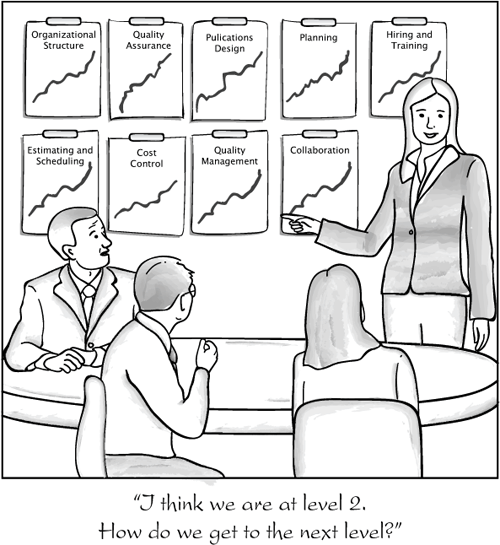Chapter 2. The Information Process Maturity Model

You can often tell an organization is in crisis by the attitudes expressed toward its customers and other outsiders. An organization in crisis is so entangled in its internal problems that it forgets its fundamental reason for existence. | ||
| --Gerald Weinberg, Quality Software Management[1] | ||
“How do we compare with other information-development organizations?”
“Are we following best practices?”
These questions are typical of the most Frequently Asked Questions (FAQs) that information-development managers focus on. The FAQs continue:
How do our processes match with those of best-in-class companies?
Are we doing as well as or better than our competitors?
Is our information as good as everyone else’s?
What might we do to improve?
Given the pressure on every manager to improve the productivity of staff members, reduce the costs of information development, and, at the same time, deliver a quality product to customers, the ability to compare a department with leaders in the field is essential. The Information Process Maturity Model (IPMM) was designed to provide standard methodology for making such comparisons. Managers worldwide have used the IPMM to demonstrate to their larger organizations that their processes follow industry standards, that they exceed industry standards in some areas, and that they need support to improve processes in other areas. ...
Get Information Development: Managing Your Documentation Projects, Portfolio, and People now with the O’Reilly learning platform.
O’Reilly members experience books, live events, courses curated by job role, and more from O’Reilly and nearly 200 top publishers.

